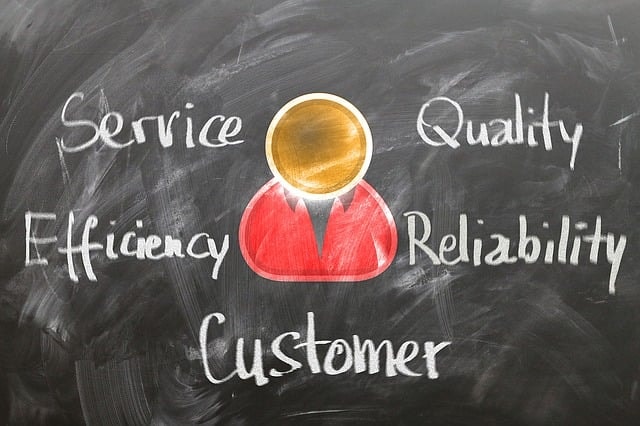Choosing the right customer satisfaction survey software is crucial for businesses looking to improve customer satisfaction and drive growth. With an increasing focus on customer experience, more companies are investing in tools that help them gather actionable feedback, measure customer sentiment, and enhance overall satisfaction. The key is finding the right solution that aligns with your business goals, customer journey, and feedback collection needs.
In this article, we’ll explore the most important aspects of selecting the best customer satisfaction software. From understanding the available features to considering the ease of use, we’ll guide you through the process of finding the right software to create and distribute customer satisfaction surveys effectively.
Understanding Your Customer Satisfaction Needs
Before diving into the sea of customer satisfaction survey tools, it’s essential to understand your specific needs.
What are your goals? Are you looking to measure customer satisfaction across different touchpoints, or are you more interested in customer feedback for a particular product or service? Defining your objectives will help you focus on the right tools and features.

Customer satisfaction is a broad concept encompassing multiple dimensions of the customer experience. You need to consider the customer journey, customer expectations, and overall service quality when choosing software that fits your goals. Whether it’s a simple CSAT survey tool or a more advanced customer experience platform, the software should align with your company’s mission to deliver excellent customer experiences.
Key Features to Look For in Customer Satisfaction Survey Software
When selecting customer satisfaction software solutions, there are several features to consider that will help you effectively collect customer feedback and gain valuable insights:
- Customizable Survey Templates: The ability to create personalized surveys tailored to your brand is vital. Look for software that offers a variety of survey templates and options for customization to ensure your surveys reflect your company’s voice.
- Multiple Channels for Feedback Collection: Customers interact with businesses through various channels, including email, social media, in-app experiences, and websites. Choose software that enables you to gather feedback across multiple channels to ensure comprehensive insights.
- Advanced Survey Logic: Advanced survey logic ensures that respondents only see questions relevant to them, making the survey experience smoother and more engaging. It also helps improve the quality of survey responses and response rates.
- Real-Time Feedback and Analytics: Real-time feedback enables businesses to act quickly on customer insights. Look for tools that offer real-time analytics to allow for swift responses, especially in cases of unhappy customers or emerging trends.
- Survey Data and Sentiment Analysis: The software should offer robust data analysis capabilities, including sentiment analysis and predictive analytics. This ensures you’re not just collecting data, but also deriving actionable insights that can improve your customer satisfaction strategy.
- Integration with Existing Systems: To get a full picture of your customer base and their feedback, the software should integrate with your existing sales CRM for small business or other customer management tools. This will help you track customer loyalty, identify trends, and manage your online reputation effectively.
Ease of Use and Flexibility
While powerful features are essential, customer satisfaction survey software should also be user-friendly.

Your team needs to easily create, distribute, and manage customer feedback surveys without extensive technical knowledge. Look for a tool that offers a straightforward survey creation process with drag-and-drop functionality, clear instructions, and user support.
Flexibility in terms of survey distribution is also critical. Whether you need to send surveys via email, embed them in your website, or create in-app surveys, the software should provide multiple distribution methods to maximize your reach.
A free trial can also help you determine whether the software fits your needs without making a significant upfront investment. Testing the platform will allow you to gauge its usability, flexibility, and ability to meet your specific requirements.
Maximizing Response Rates and Collecting Actionable Feedback
One of the challenges with customer satisfaction surveys is achieving high response rates. To maximize participation, consider software that supports engagement techniques such as personalized messages, incentives, or reminders.

The platform should also make it easy for customers to provide feedback quickly, through mobile-friendly interfaces or simple, straightforward question formats.
Once you’ve collected feedback, the next step is to turn it into actionable insights. The right software will offer tools for analyzing and categorizing feedback, allowing you to pinpoint areas for improvement. By focusing on key customer satisfaction metrics, such as Net Promoter Score (NPS) or CSAT survey responses, you can prioritize actions that will have the most significant impact on customer satisfaction and retention.
Enhancing Customer Satisfaction Through Advanced Features
To truly enhance customer satisfaction, look for software that offers more than just basic survey functionality. Advanced features such as customer segmentation, predictive analytics, and customer churn analysis can provide deeper insights into your customers’ needs and behaviors. These features allow you to identify patterns, predict future customer behaviors, and proactively address potential issues before they escalate.

Additionally, consider tools that offer employee feedback capabilities. Engaged and satisfied employees are more likely to provide excellent service, which directly impacts customer experiences. Collecting and acting on employee feedback can help foster a culture of continuous improvement, leading to better outcomes for both employees and customers.
Finding the Best Customer Satisfaction Software for Your Business
With so many options available, choosing the best customer satisfaction software for your business can be overwhelming. Here are a few tips to guide your decision-making process:
- Assess Your Budget and Needs: Define your budget and what you need from the software. Are you looking for a basic tool for conducting surveys, or do you need a comprehensive customer satisfaction platform with advanced features like sentiment analysis and predictive analytics?
- Look for Flexibility and Scalability: Your business will likely grow, and so will your customer feedback needs. Ensure that the software can scale with your business, allowing for more users, surveys, and data as your customer base expands.
- Read Reviews and Test Multiple Tools: Don’t rely on a single source of information. Read reviews, compare different tools, and take advantage of free trials to see how the software performs in real-world conditions.
- Consider Customer Support and Training: Even the best tools can have a learning curve. Look for software providers that offer excellent customer support and training resources to help you and your team get the most out of the platform.
Expert Comment by Dr. Jonathan Reed, Customer Experience Strategist
“Achieving the best customer satisfaction requires a comprehensive approach that aligns with evolving customer expectations. The right customer survey software not only enhances customer satisfaction but also provides actionable insights through features like advanced survey logic and customer segmentation. Leveraging multiple channels to gather feedback enables businesses to capture the full spectrum of customer experiences. A free trial helps evaluate these tools, but long-term success depends on how well you use predictive analytics, actionable feedback, and even employee feedback to drive overall customer satisfaction and improve service quality.”
Myth Busting: Common Misconceptions About Customer Satisfaction Survey Tools
When it comes to choosing a customer satisfaction survey tool, there are several common myths and misconceptions that can mislead businesses. To help you make informed decisions, we’ve compiled seven myths about customer surveys and their corresponding factual explanations.

Understanding these myths will enhance your ability to effectively collect feedback, drive customer success, and improve overall customer satisfaction.
Myth 1: “Customer Satisfaction Survey Tools Are Just a Survey Tool”
Fact: While many people think that customer survey software is just a survey tool, modern solutions go far beyond simple surveys. Today’s tools integrate advanced analytics, customer data management, and predictive insights.
These features help you not only conduct surveys but also gain a deeper understanding of customer behavior, segment your audience, and predict potential unsatisfied customers. They provide all the tools you need to improve customer satisfaction holistically, rather than being limited to collecting feedback.
Myth 2: “Online Surveys Are Only Useful for Large Corporations”
Fact: There’s a misconception that online surveys are primarily designed for large enterprises with extensive customer bases. However, customer survey software is beneficial for online businesses of all sizes, from small startups to large corporations.
Whether you have hundreds or thousands of customers, surveys can provide crucial insights into customer satisfaction and help you improve your services. Even small businesses can leverage CSAT surveys and CSAT survey tools to measure customer loyalty and enhance customer success.

Myth 3: “You Only Need to Create CSAT Surveys Once”
Fact: Creating a CSAT survey isn’t a one-and-done task. Customer expectations and experiences change over time, so it’s essential to continually gather feedback.
You need to regularly create CSAT surveys and other feedback mechanisms to keep up with changing customer needs and improve overall customer satisfaction. A single survey won’t provide all the answers, and periodic feedback collection ensures you’re always in tune with your audience.
Myth 4: “Customer Satisfaction Scores Tell You Everything You Need to Know”
Fact: Customer satisfaction scores (such as CSAT or NPS) are valuable indicators, but they are not the whole story. These scores give you a snapshot of how customers feel at a particular moment but often lack context.
To truly understand your customers, you need to analyze the customer data behind these scores, including open-ended responses, behavior trends, and demographics. Scores should be combined with qualitative feedback and other metrics to get a comprehensive view of customer sentiment and customer success.

Myth 5: “Once You Distribute Surveys, Your Work Is Done”
Fact: Many businesses assume that after they distribute surveys, they’ve completed the job. However, collecting responses is just the first step. The real value lies in analyzing the results, identifying trends, and implementing actionable changes.
Simply gathering feedback without addressing it can lead to frustrated and unsatisfied customers. To achieve customer success, you need to act on the insights derived from surveys.
Myth 6: “Straightforward Surveys Are Always the Best Approach”
Fact: While straightforward surveys are often easier for customers to complete, they aren’t always the most effective for gathering detailed feedback. In some cases, more complex survey designs using advanced survey logic are necessary to capture nuanced customer experiences. Balancing simplicity with depth is crucial for ensuring that your customer satisfaction survey tool gathers meaningful data without overwhelming respondents.
Myth 7: “All Your Data Can Be Collected in a Single Survey”
Fact: Some businesses believe that a single, well-crafted survey can capture all your data needs. In reality, no single survey can cover every aspect of customer satisfaction. Different stages of the customer journey require different types of feedback.
For example, post-purchase surveys might focus on service quality, while onboarding surveys might evaluate the ease of use. Using multiple surveys tailored to specific touchpoints ensures that you’re getting comprehensive feedback across the entire customer experience.

By debunking these common myths, businesses can better leverage customer satisfaction survey tools to enhance customer success and improve overall customer satisfaction. Whether you’re using online surveys to gather feedback, creating CSAT surveys, or distributing questionnaires across various channels, understanding these misconceptions will help you get the most out of your customer survey software. Remember, gathering feedback is just the beginning—turning those insights into actionable improvements is the real key to long-term success.
Expert Comment by Dr. Emily Spencer, PhD in Customer Experience Analytics
“Selecting the right customer satisfaction software is crucial for businesses aiming for the best customer satisfaction results. Modern tools allow companies to gather actionable insights, ensuring continuous improvement and alignment with customer expectations.

In my experience, balancing customer satisfaction scores with in-depth analysis from CSAT surveys is key to sustained growth. By leveraging advanced features such as predictive analytics and multi-channel feedback collection, businesses can proactively enhance their customer relationships.”
Pros and Cons of Using Advanced Survey Logic in Customer Satisfaction Software

Pros:
- Improved Data Quality: Advanced survey logic tailors questions to respondents’ previous answers, ensuring you gather relevant and accurate feedback.
- Enhanced Customer Experience: Customers appreciate personalized surveys that ask meaningful questions, leading to higher engagement and customer satisfaction.
- Efficient Feedback Collection: By skipping irrelevant questions, advanced survey logic reduces survey fatigue, leading to better completion rates.
- Targeted Insights: The ability to segment responses based on logic-driven pathways provides more granular insights for customer segmentation and decision-making.
- Optimized Resource Use: Businesses can save time and resources by focusing only on the most critical data points, making the feedback analysis process more efficient.
Cons:
- Complex Setup: Implementing advanced survey logic can be challenging and requires more time and expertise during the survey creation phase.
- Higher Costs: Sophisticated survey tools with advanced logic often come at a premium, which can be a barrier for smaller businesses.
- Potential for Errors: If not set up correctly, logic-based surveys can confuse respondents or lead to incomplete data like in survey in Microsoft Forms.
- Limited Flexibility: Once the logic paths are created, making changes can be time-consuming, potentially limiting flexibility for quick adaptations.
- Over-Segmentation Risk: Excessive logic-based branching may result in over-segmenting the data, leading to fragmented insights that are difficult to analyze cohesively.
Conclusion: Invest in the Right Tools for Lasting Customer Satisfaction
Investing in the right customer satisfaction survey software can be a game-changer for your business. It empowers you to collect actionable feedback, enhance customer satisfaction, and build lasting relationships with your customers. By focusing on the key features, usability, and flexibility, you can find the best customer satisfaction software solutions to meet your needs.
Remember, customer satisfaction surveys are not just about collecting feedback—they’re about driving continuous improvement in your products, services, and overall customer experience. With the right software in place, you can turn customer feedback into a powerful tool for growth and success.
Frequently Asked Questions (FAQs)
1. What is customer satisfaction software?
Customer satisfaction software helps businesses collect feedback and analyze customer experiences to improve overall customer satisfaction. It provides tools to create surveys, measure satisfaction, and gain insights to enhance service and product quality.
2. How can I measure customer satisfaction?
You can measure customer satisfaction using CSAT surveys and other metrics like Net Promoter Score (NPS). These surveys provide a customer satisfaction score that reflects customer happiness with your product or service.
3. What makes a good customer satisfaction survey tool?
The best customer satisfaction survey tool offers customizable survey templates, advanced survey logic, and robust analytics. It should allow businesses to gather feedback, segment customers, and provide actionable insights to drive customer success.
4. How do I enhance customer satisfaction?
To enhance customer satisfaction, use customer satisfaction software to collect feedback, analyze customer experiences, and implement improvements based on actionable insights. Regularly distribute surveys to monitor progress and adapt to changing customer needs.
5. Why is customer feedback important?
Customer feedback helps businesses understand customer expectations, identify areas for improvement, and enhance service quality. It drives product development, customer retention, and overall business growth by aligning offerings with customer needs.
6. What is advanced survey logic?
Advanced survey logic tailors questions based on previous answers, making surveys more relevant for respondents. It improves data quality by asking appropriate questions, ensuring valuable feedback, and boosting engagement in customer survey software.
7. How does customer segmentation improve surveys?
Customer segmentation divides your audience into groups based on demographics, behavior, or preferences. This allows you to create targeted surveys, gather specific insights, and provide more personalized experiences that enhance overall customer satisfaction.
8. Can I try customer satisfaction software for free?
Many customer satisfaction software providers offer a free trial, allowing you to test features like survey creation, customer segmentation, and predictive analytics before making a full commitment.
9. How do CSAT surveys improve customer experiences?
CSAT surveys provide direct insights into how satisfied customers are with a particular aspect of your service. By analyzing this actionable feedback, businesses can make targeted improvements to enhance customer experiences and boost customer success.
10. How do I distribute surveys effectively?
To effectively distribute surveys, use multiple channels such as email, in-app notifications, or SMS. Tailor the delivery to your audience’s preferences, ensuring you reach as many respondents as possible for comprehensive customer feedback.
11. What is the role of employee feedback in customer satisfaction?
Employee feedback is crucial for improving service quality. Happy, engaged employees deliver better customer service, which in turn enhances overall customer satisfaction and contributes to business success.
12. How does predictive analytics help improve customer satisfaction?
Predictive analytics uses data to anticipate customer behaviors and trends. It enables businesses to proactively address issues, improving customer experiences and boosting satisfaction by acting on insights before problems escalate.

Comments are closed